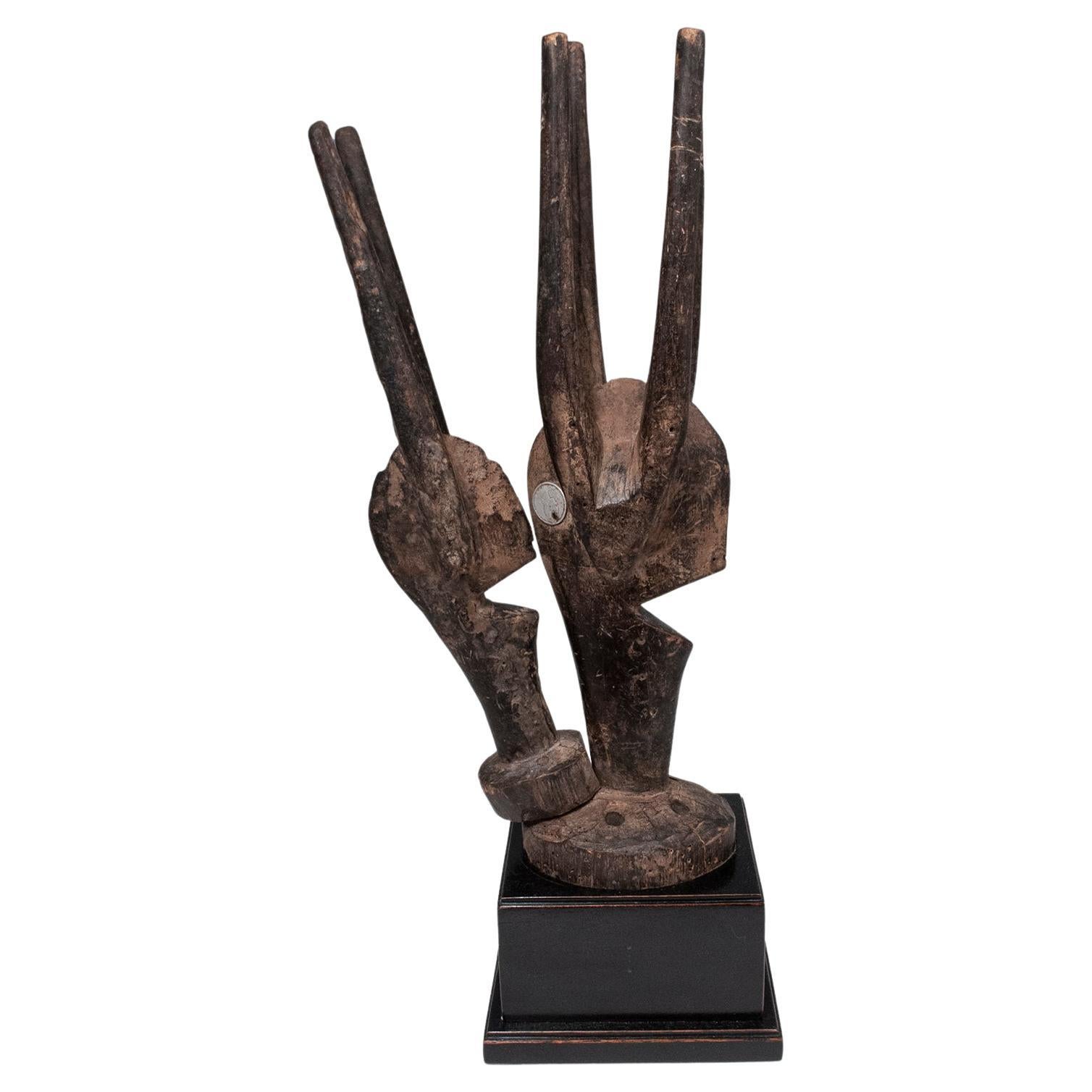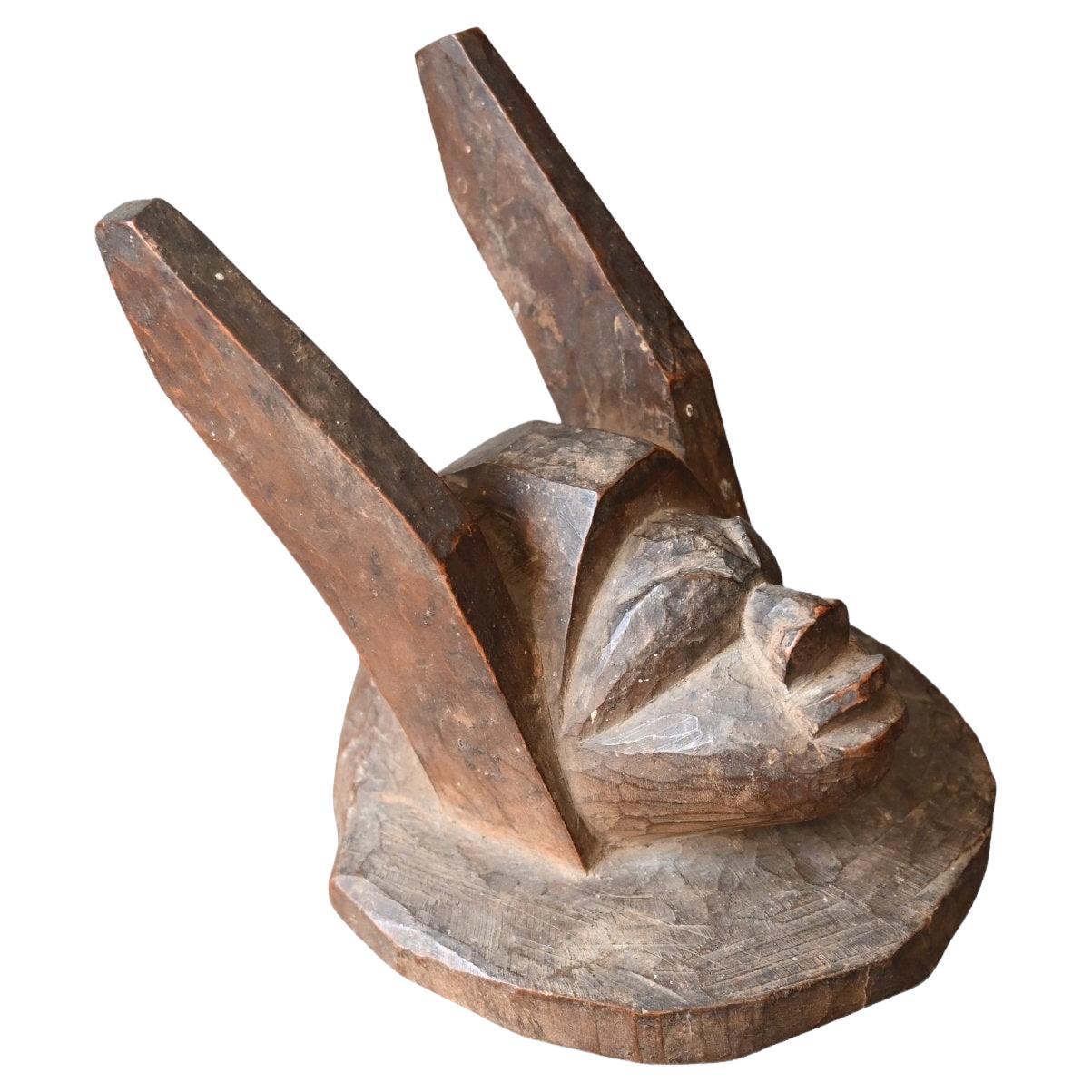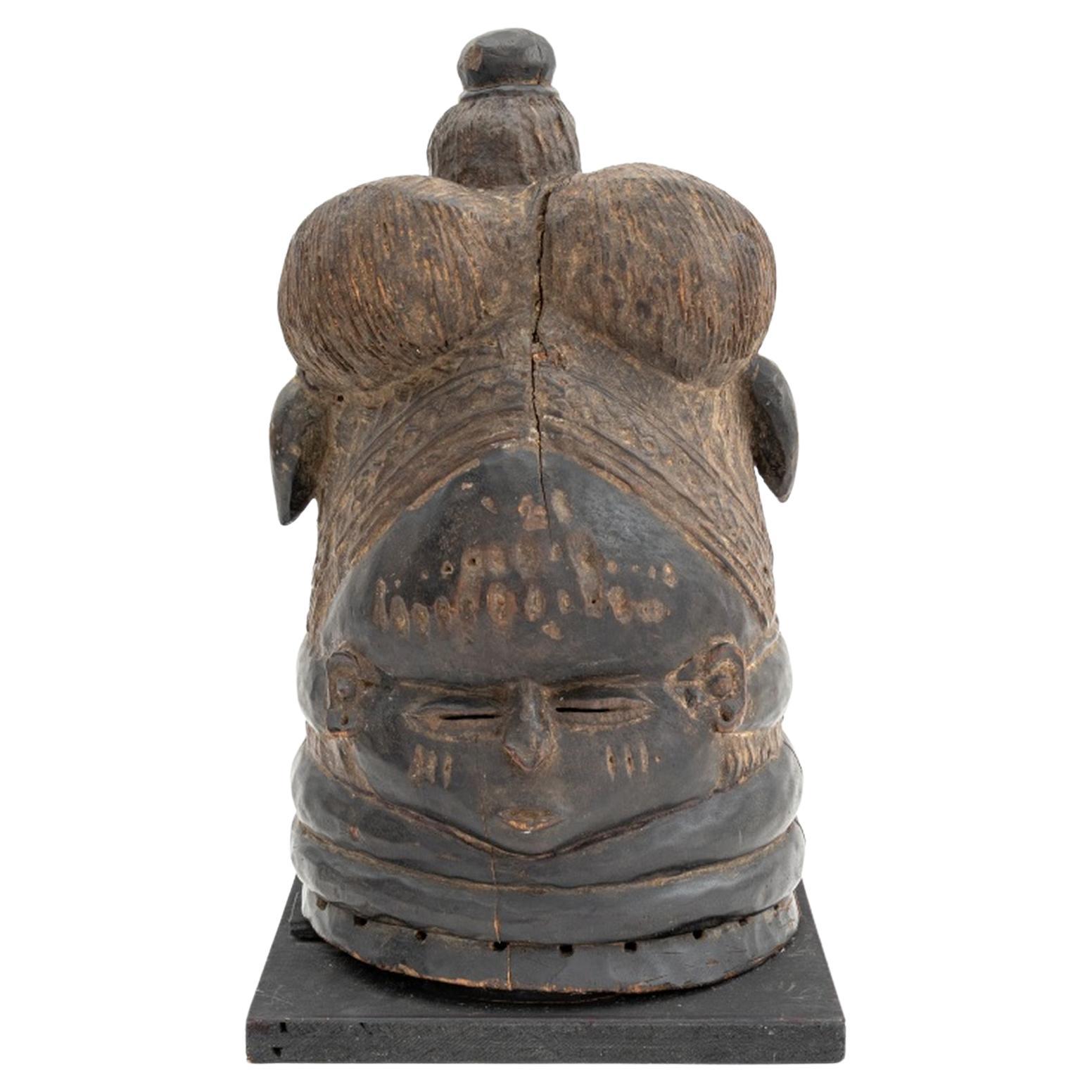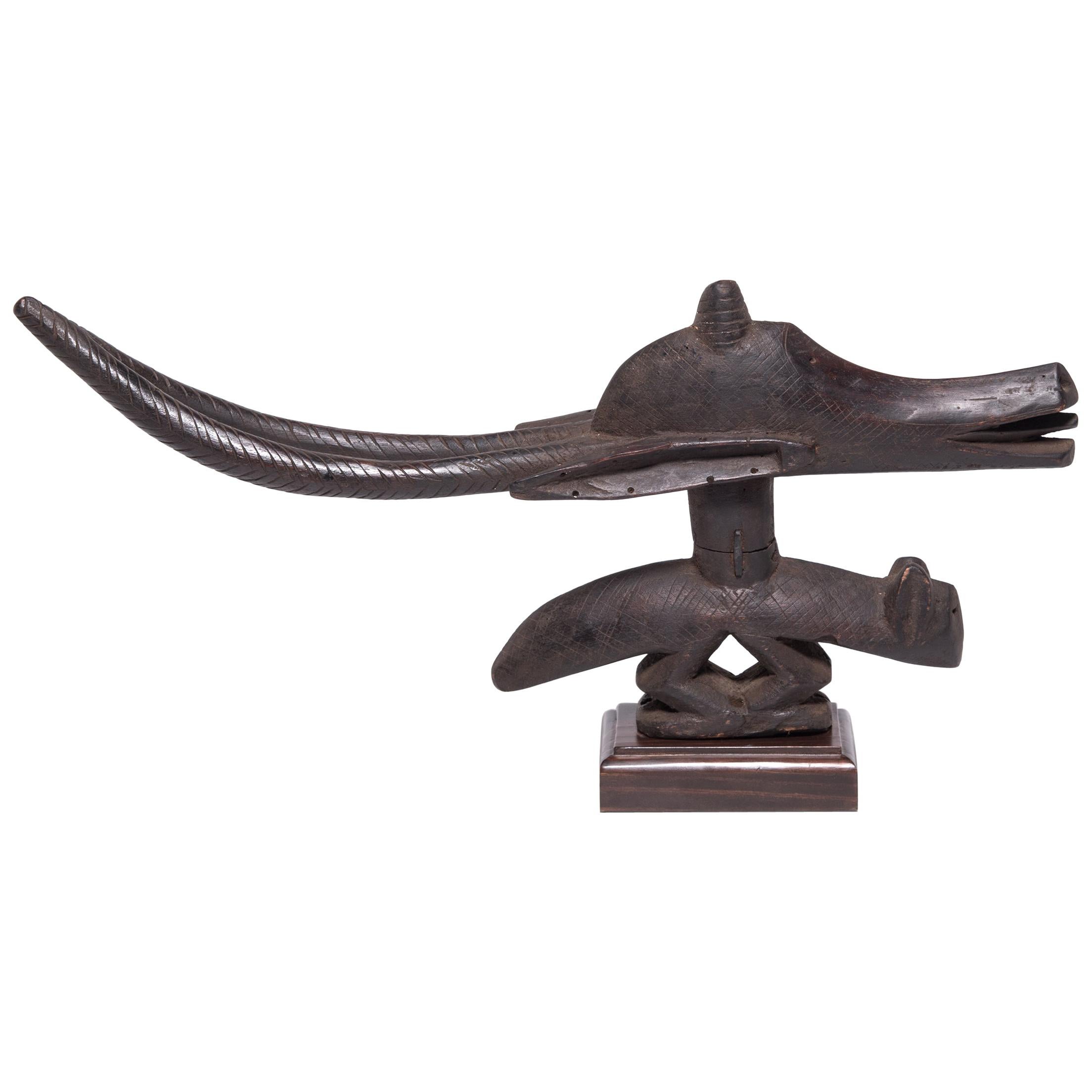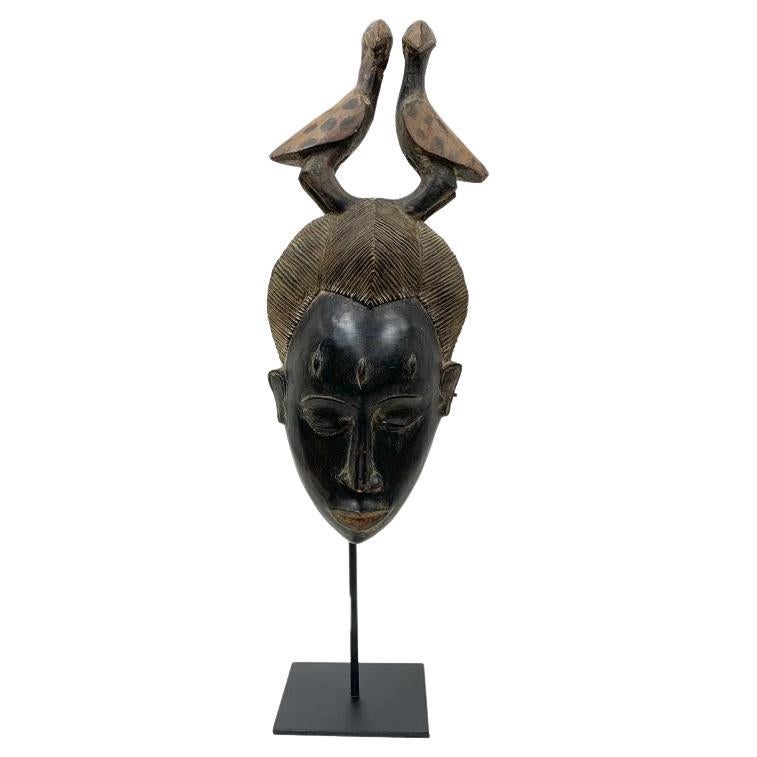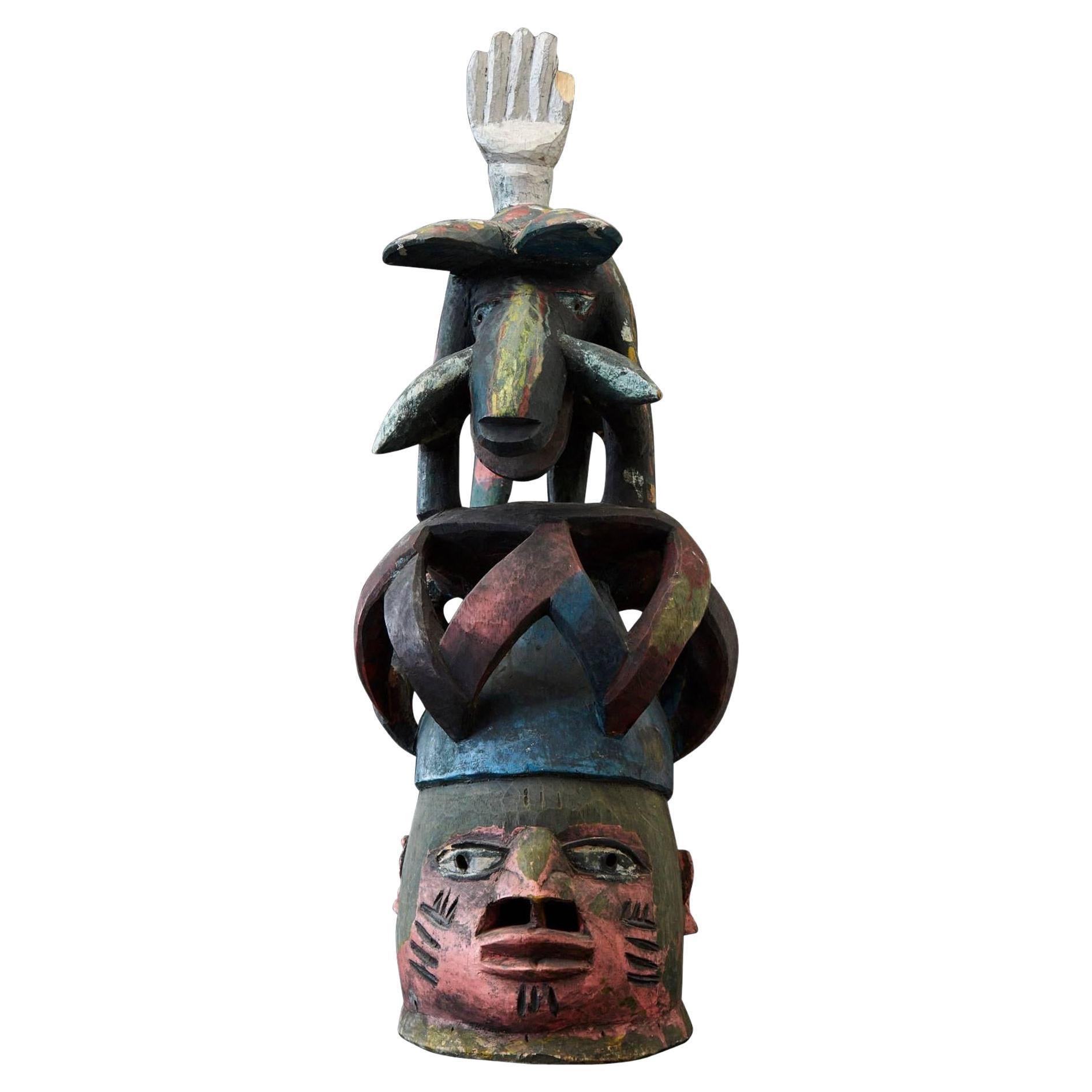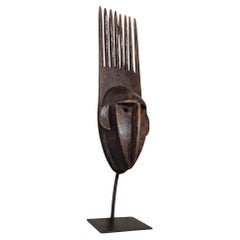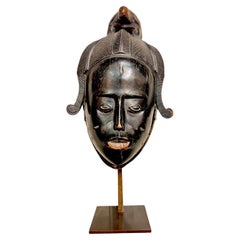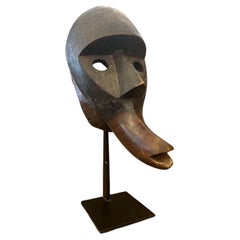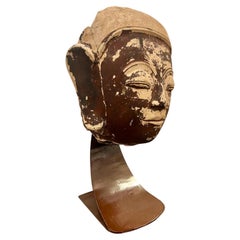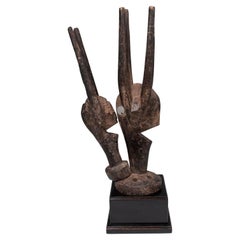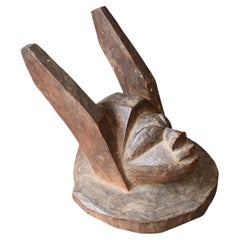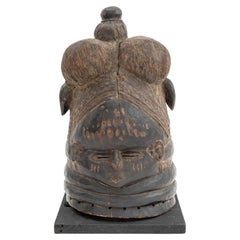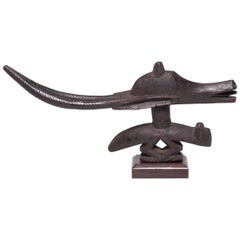Items Similar to Ciwara Bambara headdress in carved wood and basketry, Mali, Early 20th century
Video Loading
Want more images or videos?
Request additional images or videos from the seller
1 of 8
Ciwara Bambara headdress in carved wood and basketry, Mali, Early 20th century
$2,050.60
£1,525.44
€1,710
CA$2,807.97
A$3,122.08
CHF 1,630.18
MX$38,003.28
NOK 20,800.34
SEK 19,488.93
DKK 13,017.29
Shipping
Retrieving quote...The 1stDibs Promise:
Authenticity Guarantee,
Money-Back Guarantee,
24-Hour Cancellation
About the Item
A very pleasing Ciwara crest, singularly small and accompanied by its original headdress, depicting a stylized antelope leaning on a pangolin. The antelope is ridden by a woman, and white horsehair has been added to the tips of the horns. The piece is carefully sculpted, with notches decorating the bodies of the antelope and the pangolin.
Rattan, plant fiber, cowries, wood Very fine velvety mat patina, Circa 1950
An animal called Ciwara is said to have taught the Bambara how to cultivate the land, and during agrarian ceremonies, they recall the myth through the stylized representation of an antelope whose name ci wara means “fawn of the earth”.
During these ritual ceremonies, the mask-cimier became the attribute of a costumed dancer who gave it life and speech.
Worn at the top of the skull and held in place by a sort of small wickerwork cap, these crests accompanied the dancers during rituals dedicated to agricultural work.
The masks would leap across the field to chase away evil spirits, revive seeds and restore vitality to crops.
- Dimensions:Height: 17.33 in (44 cm)Width: 9.45 in (24 cm)Depth: 7.49 in (19 cm)Seat Height: 17.72 in (45 cm)
- Style:Tribal (In the Style Of)
- Materials and Techniques:
- Place of Origin:
- Period:
- Date of Manufacture:Circa 1930
- Condition:Wear consistent with age and use.
- Seller Location:NICE, FR
- Reference Number:1stDibs: LU9202242404402
About the Seller
5.0
Gold Seller
Premium sellers maintaining a 4.3+ rating and 24-hour response times
Established in 2003
1stDibs seller since 2023
28 sales on 1stDibs
Typical response time: 5 hours
- ShippingRetrieving quote...Shipping from: NICE, France
- Return Policy
Authenticity Guarantee
In the unlikely event there’s an issue with an item’s authenticity, contact us within 1 year for a full refund. DetailsMoney-Back Guarantee
If your item is not as described, is damaged in transit, or does not arrive, contact us within 7 days for a full refund. Details24-Hour Cancellation
You have a 24-hour grace period in which to reconsider your purchase, with no questions asked.Vetted Professional Sellers
Our world-class sellers must adhere to strict standards for service and quality, maintaining the integrity of our listings.Price-Match Guarantee
If you find that a seller listed the same item for a lower price elsewhere, we’ll match it.Trusted Global Delivery
Our best-in-class carrier network provides specialized shipping options worldwide, including custom delivery.More From This Seller
View AllBamana N'tomo mask, Mali, 20th century
Located in NICE, FR
Bamana N'tomo mask, Mali, 20th century
"Generally surmounted by three to eight horns forming a comb, the N'tomoface mask refers to a moment of compulsory education given to uncircumcised young boys in certain West African societies. The mask's discreet, even absent, mouth emphasizes the behavior expected of them in their future adult life after training: controlling and measuring their words, knowing how to keep quiet, preserving secrets and enduring pain in silence."
Excerpt from Masques du N'tomo, Marc Ladreit de Lacharrière Collection, Musée du Quai Branly Jacques Chirac, France.
The Bambara, or Bamana, live in central and southern Mali. Their name means “unbeliever” and was given to them by the Muslims. Animists, they believe in the existence of a creator god called Ngala, who maintains the order of the universe and coexists with another androgynous god called Faro, master of the Word, who gave all qualities to mankind and makes the fruits of the earth grow. Traditional Bamana art objects are closely linked to agrarian rites.
The Bamana dance these masks during initiation and circumcision ceremonies for young boys in the Ntomo society. The face, with its vertical outgrowths at the top, adopts geometric features beneath a rounded forehead, including an imposing busted nose, as the Bamana favor this organ in their statuary as it evokes sociability and clan cohesion. Indeed, during choreography, the dancer frequently touches the nose of the mask.
As teaching aids for candidates, masks from societies accessible to young boys and adults, such as the N'tomo, Korè and Ci wara...
Category
Vintage 1930s Malian Tribal Tribal Art
Materials
Wood
Ndoma Baule Portrait Mask, Ivory Coast, Wood, lacquered patina, Circa 1930
Located in NICE, FR
"Ndoma” Baule Portrait Mask, Ivory Coast, Circa 1930 Wood, heavy wood with deep brown-black lacquered patina.
A superb old hardwood dance mask featuring an ...
Category
Vintage 1930s Tribal Tribal Art
Materials
Wood
Dan Mask from Ivory Coast, Africa, 1950
Located in NICE, FR
This very elegant Dan mask is well-proportioned with a long protruding mouth from Ivory Coast, Africa. It dates back to the 1950s. The base is included in the price.
Dan masks have...
Category
Mid-20th Century Ivorian Tribal Masks
Materials
Wood
Terracotta Buddha head, Shan State Kingdom, Burma, 16th/18th century
Located in NICE, FR
Stoneware Buddha head, Shan State Kingdom, Burma, 16th/18th century
Buddha head from a temple facing built entirely of mud bricks during the 16th/18th century. Maravijaya Buddha. Sh...
Category
Antique 17th Century Burmese Medieval Sculptures and Carvings
Materials
Terracotta, Lacquer
Shell Plaque (Barava) from Solomon Islands, 19th Century
Located in NICE, FR
Objects crafted from the shell of the giant Tridacna clam, also known as the fossilized giant clam, held great value among numerous Melanesian peoples. The artistry of working with f...
Category
Antique 19th Century Solomon Islands Tribal Tribal Art
Materials
Shell
16th Century Ceremonial Urn from Burkina Faso, Africa
Located in NICE, FR
Beautiful funerary terracotta urn called from the Bura region (Niger) in West Africa. This cylindrical anthropomorphic sculpture is adorned with geometric designs. It depicts a human...
Category
Antique 16th Century Burkinabe Tribal Urns
Materials
Terracotta
You May Also Like
Early 20th Century Chiwara Headdress, Bamana 'Bambara' People, Mali
Located in Point Richmond, CA
Early 20th century Chiwara Headdress, Bamana (Bambara) People, Mali
Chiwara headcrests represent the antelope spirit who taught the Bamana people ...
Category
Early 20th Century Malian Tribal Mounted Objects
Materials
Wood
Antique carved wooden headdress from the Yoruba tribe, Nigeria, 1900-1920
By Yoruba Tribe
Located in Bilzen, BE
A carved wooden headdress from the Yoruba tribe, Nigeria
Strong expression face
Early 20th century
Rich tribal aged patina
Heigth 12 cm, diameter 12 x 13 cm
Category
Early 20th Century Nigerian Tribal Tribal Art
Materials
Wood
African Mende Carved Wood Helmet Mask
Located in Astoria, NY
African Mende Carved Wood Helmet Mask, together with Segy Gallery documentation, atop a square ebonized wood base. Overall: 16" H x 9.25" W x 9.5" D. Provenance: Segy Gallery, New Yo...
Category
Antique Late 19th Century Sierra Leonean Tribal Masks
Materials
Wood
Bambara Ci Wara Headdress Sculpture
Located in Chicago, IL
Carved to honor the mythical being Ci Wara, a Bambara deity that’s half mortal and half animal, this wooden headdress combines the graceful head and horns of a...
Category
Mid-20th Century Malian Tribal Abstract Sculptures
Materials
Wood
Carved Africian Wood Ceremonial Mask On Custom Stand
Located in Bridgeport, CT
A strongly carved mask, likely Baule Tribe, on custom iron display stand. With fine serene features, scarification on the forehead, delicately carved hair and surmounted by two forwa...
Category
Mid-20th Century African Tribal Tribal Art
Materials
Wood
Gelede Headdress, Yoruba People, Nigeria, circa 1950s
By Yoruba People
Located in Aramits, Nouvelle-Aquitaine
Gelede festivals honor the creative and dangerous power of women elders, female ancestors and goddesses known as "our mothers". The Gelede headdress often consists of two parts, a lo...
Category
Mid-20th Century Nigerian Tribal Tribal Art
Materials
Wood
